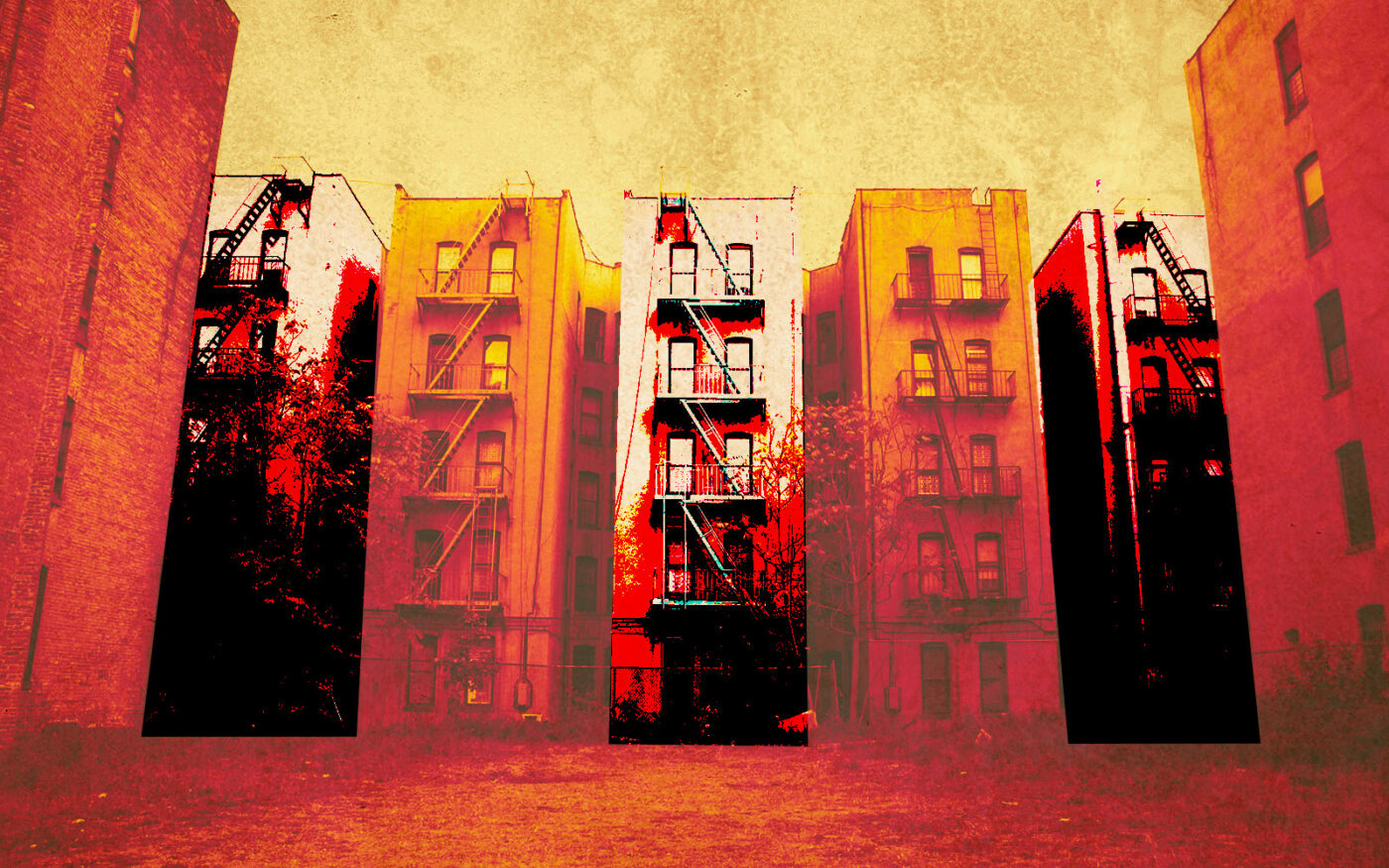 Housing deal finally passes; here are the details
Housing deal finally passes; here are the details
Trending
“I wouldn’t use it, I would just lock the door”: Landlords pan new rehab law
Owners of vacant, rent-stabilized units say state’s action falls short

Nearly five years after the state put rent-stabilized revenues in a vise grip and dilapidated apartments into storage, Albany sent relief.
But will it change anything for owners of rent-stabilized buildings?
“The short answer is no,” said Lewis Barnabel, who recently took a 44 percent haircut on a rent-stabilized property.
The 2019 rent law put a $15,000 cap on individual apartment improvements — the renovations that landlords could pay for by increasing rent. The allowed monthly hike was 1/168 of the project cost in buildings with fewer than 35 units and 1/180 in larger buildings, which is $89 or $83 per month, respectively, over 15 years, after which the increase goes away.
Landlords claimed that was not enough for low-rent units needing a lot of work — after decades-long tenancies, repairs can easily top $100,000 — so they had to let them rot.
The remedy
Hochul’s state housing deal, passed this weekend, included a measure to “bring vacant apartments back on the rental market,” as the governor’s release framed it.
Owners can now spend $30,000 over 15 years and raise rents by either 1/180 of the cost in larger buildings or 1/168 for smaller ones. That’s $166 or $179 per month. This time, the hikes are permanent.
If the unit were occupied for 25 years or registered as vacant in 2022 or later, owners can do a $50,000 repair and hike rent by 1/144 or $347 per month in small buildings, and 1/156 or $320 in big ones.
Landlords claim both the new caps still won’t cover the cost of gut renovations and even if they did, they cannot get financing for the repairs.
Funding them out-of-pocket, perhaps with money from performing buildings, is also not attractive for owners who doubt they can keep the property long enough to reap a return.
“I wouldn’t use it,” Chris Athineos, who owns about 100 apartments in Brooklyn, said of the new program. “I think I would just lock the door.”
“Nowhere near what you need”
In the days after word of the new cost caps surfaced, rent-stabilized owners’ overwhelming complaint was legislators seemed clueless about why the amounts were not enough to bring a run-down apartment back.
“Whether it’s $15,000 or $30,000, it’s just nowhere near what you need in order for the renovations of these vacant units to take place,” said Joe Tahl of Tahl Propp Equities, a rent-stabilized owner.
Landlords say if they leave a unit empty, it signals that renovation costs far outstrip a unit’s rent. Many apartments held offline have legal rents of just hundreds of dollars per month, owners report.
Two years ago, owner David Eschaghoff estimated it would cost up to $120,000 to fix his units with collapsing ceilings and defunct plumbing. Costs have only risen since. Landlords note that NYCHA spends $375,000 on average to rehab a unit.
Needed repairs can run the gamut. But lead abatement was repeatedly cited by owners as one of the most prohibitive costs.
When a tenant vacates, the city requires the landlord to make the apartment safe from lead, which causes brain damage in children. At minimum, the owner must remove lead from doors, window sills and walls. It’s a labor-intensive project.
“You have to either remove the plaster walls or encapsulate them with sheet rock, rip out all of the moldings, the door bucks, install all new doors to the apartment,” Athineos said.
One landlord estimated the wall work alone could run $30,000. Doors could be $7,000 apiece. Permits cost as much as $15,000.
“Fifty thousand dollars doesn’t even come close to what you would need,” Athineos said.
“If you want them lead-free, then $50,000 will never cover it,” said Leon Goldenberg, another owner of rent-stabilized units.
Laundry list
Lincoln Eccles, the owner of a rent-stabilized Crown Heights building, rattled off the needed repairs for a vacant unit that a tenant rented from 1972 until his death in 2021. The two-bedroom’s legal rent is $491.
“Lead abatement, upgrading electrical, redoing kitchen and bathrooms,” he said. “Pulling out the tub, retiling, redoing the plumbing.”
The cost? “Cutting all kinds of corners, $84,000,” he said.
If Eccles were approved for a $50,000 renovation, he could boost rent to $838, which he said would not be enough to cover his $1,200 operating expenses.
“So, no, the IAIs are not sufficient,” Eccles said.
Athineos noted that many of his units are bigger, so a renovation costs more — another facet the legislation does not consider.
He has a vacant three-bedroom, two-bathroom unit with a regulated rent of $1,200 that he could bring back online for $150,000. Under the new IAI rules, he could boost the rent to a little over $1500.
“That doesn’t even cover operating costs: taxes, heating, water and sewer,” Athineos said. “It would make no sense to invest that money and rent it for that amount.”
No one to loan
Landlords weighing in on the new IAI caps also wondered where they could get the up-front funds needed for a major renovation.
“Who’s lending the money?” asked Goldenberg. “There’s no bank that’s going to lend me the money.”
The Community Housing Improvement Program, a landlord group, said banks that previously lent to rent-stabilized owners are no longer offering loans to renovate because the rents in buildings needing repairs don’t support project costs.
Owners that can get a loan are finding the prevailing interest rate impossible to cover. Some say lenders no longer offer interest-only products to rent-stabilized buildings, making financing even more expensive.
Many rent-stabilized owners can’t cover their mortgage payments as is.
“You already have all these defaulted loans on these rent-stabilized buildings that are not collecting enough rent to pay their bills, to pay their debt service,” Tahl said.
“Who knows if I’ll still own the building”
Owners say the elephant in the room with the new caps is whether they will be able to hold assets long enough to even recoup their outlay.
Goldenberg pointed to a vacant, $577-a-month unit in one of his money-losing buildings.
“Let’s say I put in $50,000,” he said. That would add $347, bringing the rent to $924 per month. Subtract the operating costs avoided by leaving it vacant — $200, he estimated — and that’s $724 or about $8,700 a year.
“It takes me five years to get my money back,” he estimated. “Who knows if I’ll still own the building?”
The landlord, who has been operating rent-stabilized housing for 40 years, estimates about half of his portfolio is operating at a loss.
Goldenberg said he has yet to let his mortgages become delinquent, but said he and other stabilized owners “are all getting very close to making that decision.”
A third-generation landlord recently told The Real Deal he sees default as imminent on one of his buildings. It would be his first.
“I might have to walk away,” he said. “Am I the only person in this position? I don’t think so.”
Read more
 Housing deal finally passes; here are the details
Housing deal finally passes; here are the details
 Rent board’s 4% hike will “plunge” buildings into distress: landlords
Rent board’s 4% hike will “plunge” buildings into distress: landlords
 Housing deal critics spin themselves silly
Housing deal critics spin themselves silly




